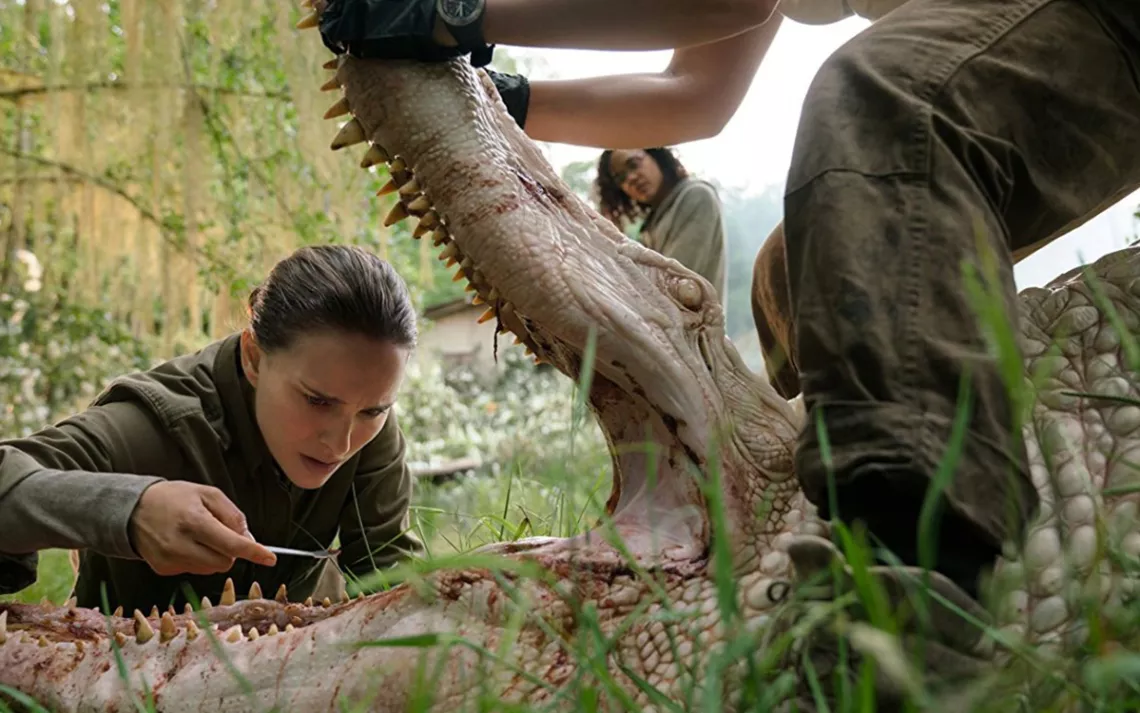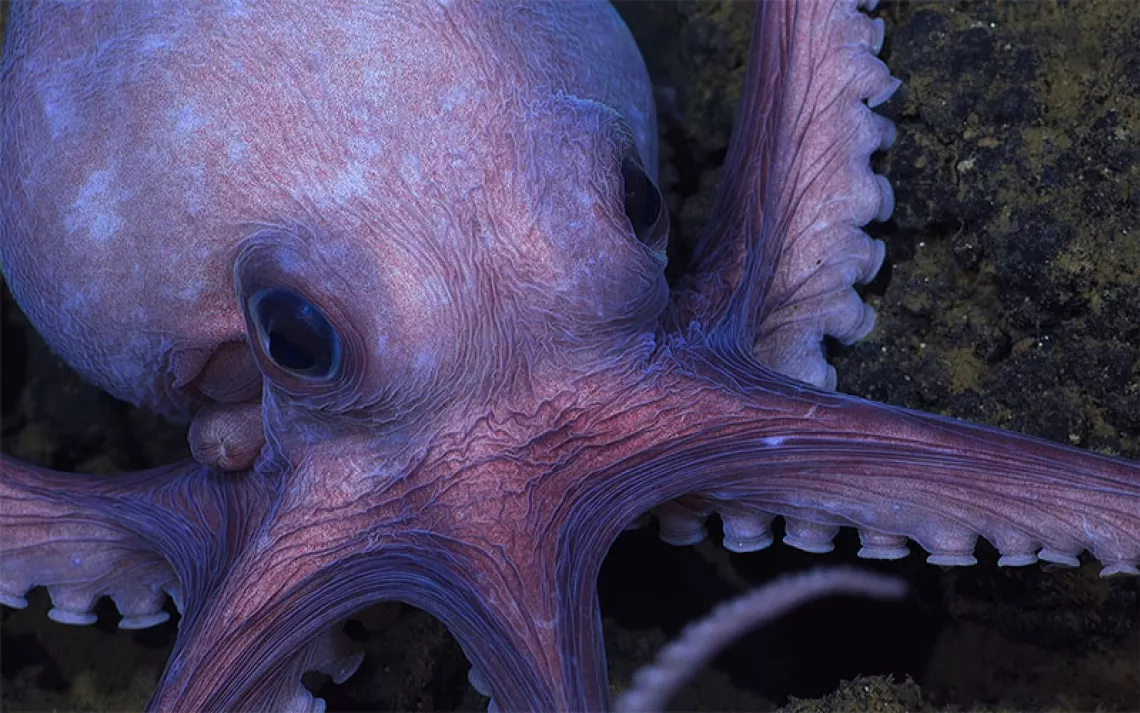“Annihilation” Is All About Being Destroyed by Nature
We could be destroyed by worse things, I guess

Photo Courtesy of Paramount Pictures
In Frankenstein, widely regarded as the first entry in the genre that later became science fiction, a guy creates a monster, and that monster escapes his control and kills a lot of people. In 1950s science fiction, men create giant radioactive ants and other thin references to the atomic bomb, which escape their control and threaten to kill everybody. In sci-fi movies of the 1980s and 90s, the monster-makers were corporations, too enticed by potential profit margins to realize that when the monsters got out, as they always did, they were definitely going to eat at least a junior executive.
In the new sci-fi film, Annihilation, all these campfire tales about accidentally creating a new kind of nature that we couldn’t control (and that would probably eat us) have mellowed like fine wine into a movie in which a new kind of nature has accidentally emerged that we can’t control (and that would probably eat us) but, most importantly, humans can’t be blamed for it. Nature is just doing its “red in tooth and claw” thing, just in a more souped-up, mutated form.

The premise of Annihilation is that a biology professor, played by Natalie Portman, joins a group of researchers headed into a park that has gone feral and begun spreading outward in a sort of vegetative manifest destiny. In the movie, the former park is called “The Shimmer” (because of a soap-bubble-like film that hovers across the perimeter) and “Area X” (because all sci-fi needs to call something “Area X” or else risk losing its accreditation). Out of all the people sent into Area X to investigate, only one has come back: Portman’s husband, who shows up after a year’s absence with little to no awareness of who he is or what he’s been up to, and with a disconcerting habit of spitting up blood at the kitchen table.
Portman joins the expedition with the goal of finding out what happened to him. But, once she’s there, she’s engrossed with the mutations that are transforming the plants and animals inside Area X. While Portman has regular flashbacks throughout the journey to moments of romantic canoodling with her husband and (surprise!) a colleague she was having a secret affair with, these seem to have been introduced into the plot out of a contractual obligation to show Portman in a skimpier outfit than the military fatigues that she wears through most of the film. She seems more comfortable tromping through Area X: a place of turbo-charged movie monsters, skulls, plants dripping with weird growths, and shrubs shaped like naked people. In other words: Florida.

Florida is where Jeff VanderMeer, the author of the trilogy that Annihilation is based on, lives. Based on VanderMeer’s description of living there, Florida is an excellent place for letting go of the illusion that your immediate environment is something you can ever hope to control. In an interview with Andrew Hageman published in a literary journal named Paradoxa, and later reprinted by the LA Review of Books, VanderMeer describes Florida as a landscape that challenges the integrity of any human-made objects placed in its path. From the vine that broke into his car and coiled around the engine, to the invasion of tiny pink geckos that set up residence inside his house, defying all attempts to block their comings and goings, VanderMeer’s day-to-day existence is a less-gory version of Annihilation. “It’s like you forget that in writing fiction you’re just transcribing reality to some degree,” VanderMeer said.
Florida itself was too much for Annihilation’s cinematographers, though. “The filmmakers told me that getting depth perception onto the screen in north Florida was impossible,” VanderMeer told Hageman. “The camera, no matter what they did, registered a flat wall of vegetation, because it’s all so dense and overwhelming—that, in fact, Area X was already there in a sense, subverting and contaminating the camera lens.” Instead, the movie was filmed in the sparser marshes of the UK, so that the Florida vegetation didn’t outshine the psychedelic set dressing.
Area X itself is based on one of VanderMeer’s favorite places, St. Mark's National Wildlife Refuge, one of the oldest national wildlife refuges in the country and home to 68,000 acres of coastal marshes, islands, tidal creeks, estuaries, alligators, wild boars, black bears, and a lighthouse not unlike the one seen in the film. On one early hike through St. Mark's, VanderMeer was 11 miles into the Deep Creek Trail when an unexpected thunderstorm rolled in. As he stumbled through the storm, lost and disoriented, looking for the road that would help him get out of there, he realized he was feeling something else: delight. “It was frightening and awesome at the same time,” VanderMeer told the Tallahassee Democrat. That feeling came back years later, when, laid up with a fever, he sketched out an early draft of Annihilation.
The resulting noir-ish novel where humans struggle to navigate a landscape that they no longer have any control over is, VanderMeer told the Democrat, more than a little about climate change, which we control the cause of, but not the effects. “I see a lot of novels with distorted or weird views about nature—they see our role as being separate from that world,” said VanderMeer, in the Democrat interview. “Annihilation is different—I wanted to approach it more from the natural world. Any solutions to the issues we’re facing now will come from engaging in that world and realizing we’re part of an ecosystem.”
That’s an optimistic take, unless you remember that in the book and the film, the characters for the most part merge with the ecosystem involuntarily, with a fair amount of gore and loss of bodily integrity. It’s the kind of film that makes you realize that maybe the Alien films weren’t so scary after all—at least Sigourney Weaver had access to airlocks and the cold void of space.
But again, the aliens in Alien were our fault (or at least the fault of the Weyland-Yutani Corporation). In Annihilation, no one is really to blame. Mutations are going to mutate. Order is an illusion. Plants laugh last. Whether or not it is ultimately successful as a horror film, Annihilation is successful as a fantasy of a world where all of the ways that we have terraformed our own planet suddenly become irrelevant.
 The Magazine of The Sierra Club
The Magazine of The Sierra Club



